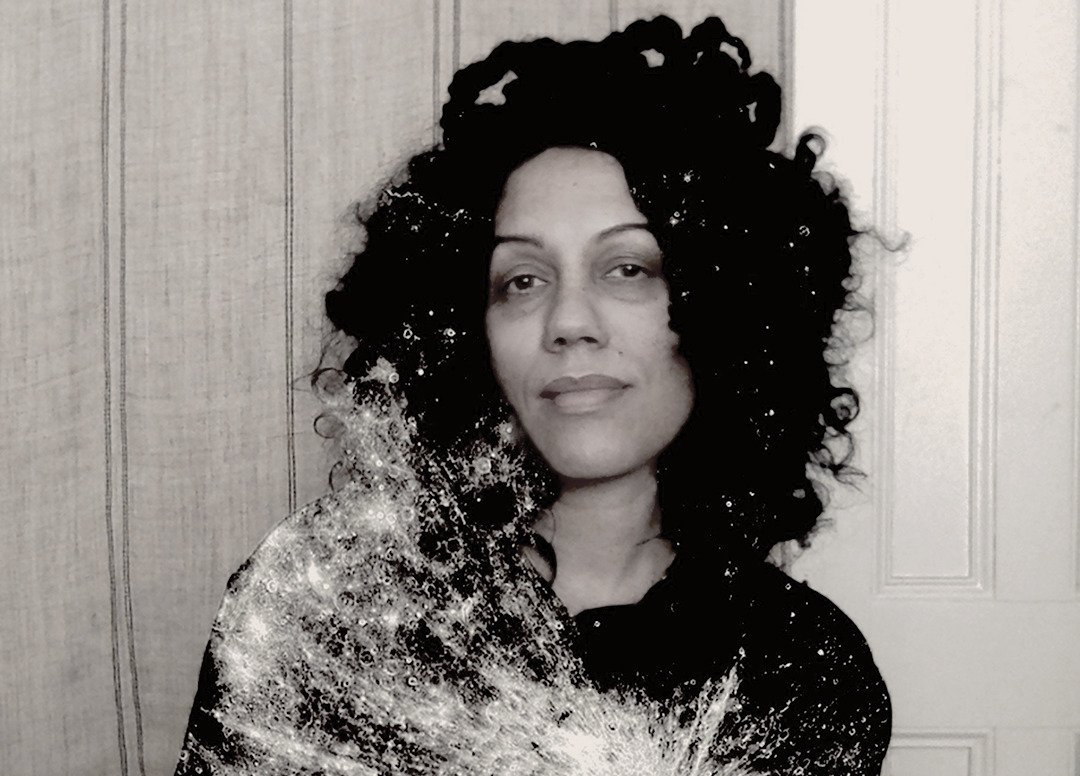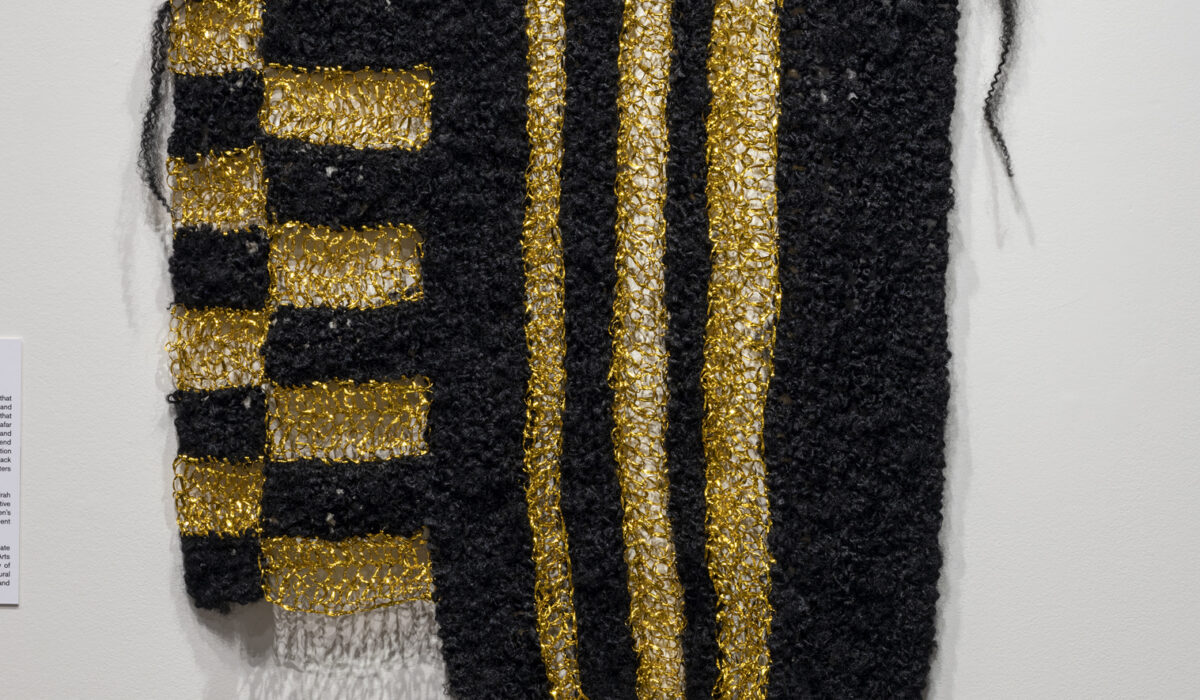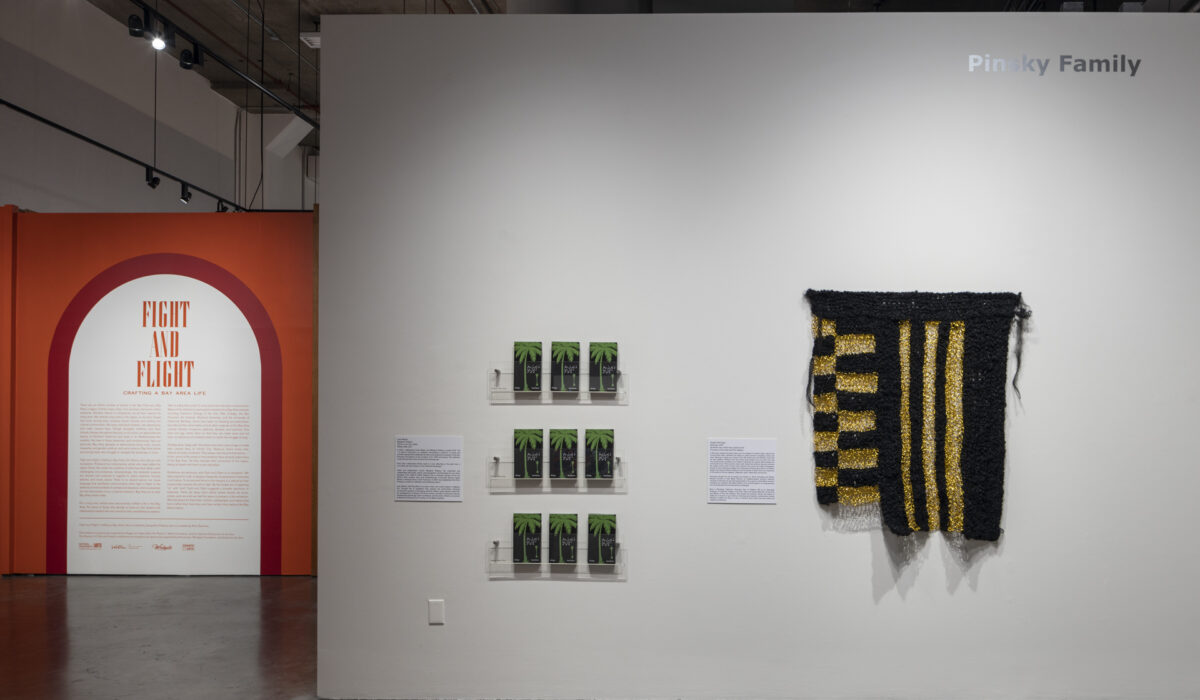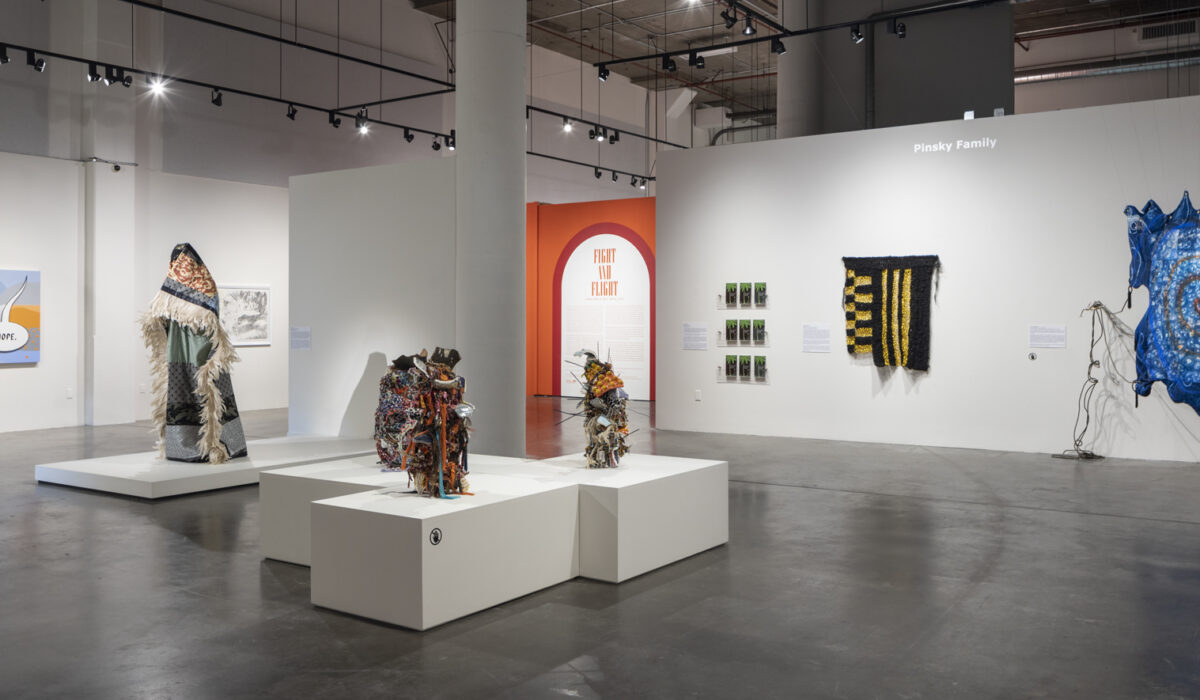Angela Hennessy
Bearings, 2021
Synthetic hair, artist’s hair, and twist tie wire
In Bearings, Angela Hennessy draws upon the designs of maritime flags—objects that communicate ships’ identities and status to guide mariners navigating oceans and seas. Bearings is made up of strips of hair–the artist’s own and synthetic ones—that are tied together. Different from the primary hues hoisted up to be seen from afar and during stormy conditions, the tresses in Bearings are somber black shades and muted gold tones. These are hair colors, both natural and artificial; they also bookend the range of skin tones of those who embrace the social and political designation people of color. Bearings emerges from Hennessy’s thinking about Brown and Black people, the historical African Diaspora, and the bodies of water which are characters in the stories of forced migration, dispersion, grief, melancholy, and survival.
Hennessy situates her art as poetics and politics. In 2019, Hennessy and Tahirah Raseed founded of See Black Women, an Oakland-based, feminist collective focused on advocacy for and self-representation. As a space in which Black women’s narratives are centered, See Black Women is an activist platform for empowerment and multigenerational and transnational exchanges.
Born in Monterey, California, Hennessy lives in Oakland. She is an Associate Professor at California College of the Arts, where she earned Bachelor of Fine Arts and Master of Fine Arts degrees. She teaches the practice, theory, and history of textile art. A survivor of gun violence, Hennessy also teaches courses about cultural histories of death and dying, an area of research about which she also writes and organizes workshops.
Photos courtesy of Henrik Kam.

ARTIST BIO
Angela Hennessy is an Oakland based artist and Associate Professor at California College of the Arts where teaches courses on visual and cultural narratives of death in contemporary art. Through writing, studio work, and performance, her practice questions assumptions about Death and the Dead themselves. She uses a spectrum of color and other phenomena of light to expose mythologies of identity. Ephemeral and celestial forms are constructed by every day gestures of domestic labor—washing, wrapping, stitching, weaving, brushing, and braiding.
Her work has been featured in Sculpture Magazine, The New Yorker, Nat Brut, Surface Design Journal, Textile: The Journal of Cloth and Culture and recently in exhibitions at The Museum of the African Diaspora, Pt. 2 Gallery, and Southern Exposure. She has received awards from Artadia, Svane Family Foundation, Aninstantia Foundation, and Joan Mitchell Foundation








